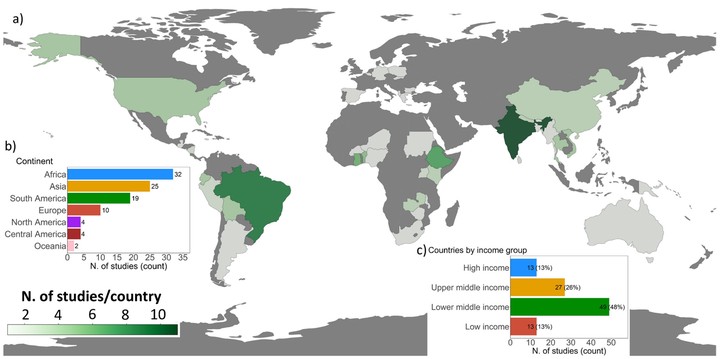
Abstract
Enhancing and maintaining on-farm diversity is a potential strategy to improve farming systems’ sustainability and resilience. However, diversification is driven or constrained by different factors and dynamics that vary across environmental, socio-economic and political contexts. Identifying drivers and constraints of diversification can help to support the adoption of on-farm diversification strategies, where doing so is beneficial. For the first time, we systematically review and summarise recent peer-reviewed studies assessing drivers and constraints of on-farm diversity from 42 different countries. From 2312 studies, we selected a total of 97, reporting 239 drivers and constraints, which we categorised using the Sustainable Rural Livelihood Framework. We extracted the number of times they were assessed as having a positive, negative or neutral relationship with on-farm diversity. Some factors mainly have a positive relationship, such as the need to adapt to risks or belonging to indigenous ethnicities, but for most of the others the results are mixed. Our major conclusions are as follows (i) The adoption of diversification strategies is affected by both production and demand dynamics, with differences depending on farms and contexts; (ii) small subsistence-oriented farms tend to adopt on-farm diversification strategies to cope with environmental characteristics and risks and satisfy their subsistence needs; (iii) farmers may shift towards specialisation strategies if the comparative advantage of diversification and its natural insurance effect gets displaced by market opportunities, financial capital, technologies and the availability of alternative and more profitable sources of income; (iv) the availability of technologies enabling farm diversification and the access to alternative market options are crucial to stimulate the implementation and maintenance of on-farm diversity; (5) future policies and research promoting the adoption of on-farm diversification strategies need to design mechanisms and incentives that consider the opportunity-cost of alternative livelihood opportunities, and that are suitable for the local context and for farmers’ objectives.